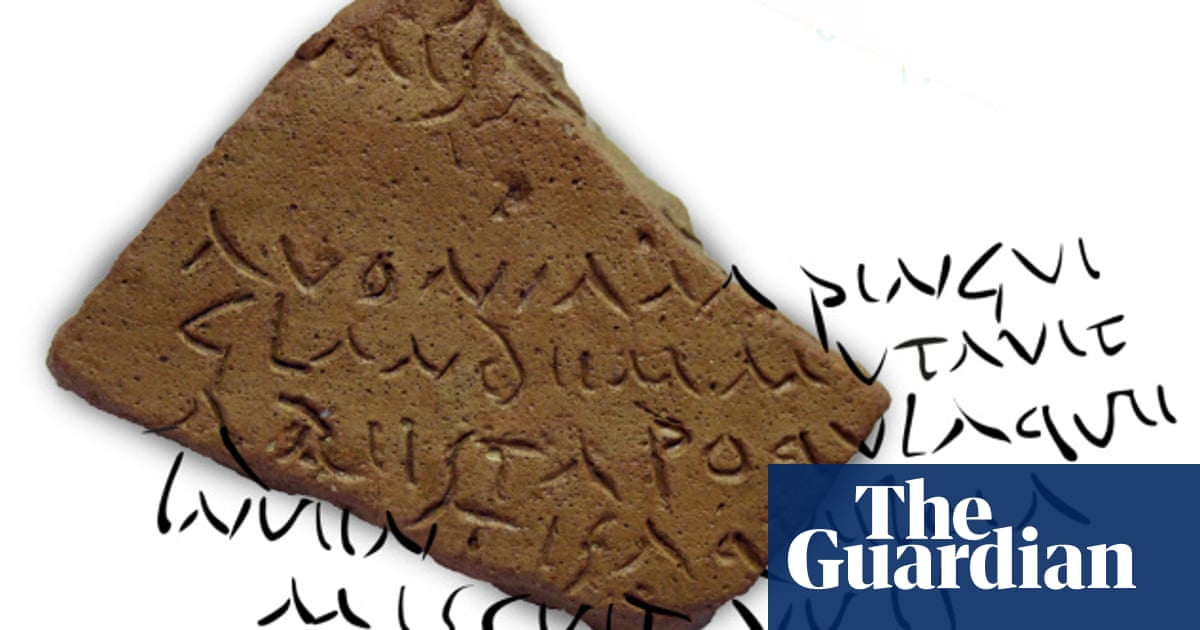
A wealthy Roman trading town, whose inhabitants adorned themselves with jewellery and ate from fine pottery, has been discovered half a metre below the surface of a remote field in Northamptonshire.
A 10-metre-wide Roman road, domestic and industrial buildings, more than 300 coins and at least four wells have been unearthed at the site, where 80 archaeologists have been working for the past 12 months.
The field, on the Northamptonshire-Oxfordshire border, lies on the route of the HS2 rail network under construction between London and Birmingham. It is one of more than 100 archaeological sites that have been examined along the route since 2018, and among the most significant findings to date.
The site near Chipping Warden, known as Blackgrounds after its dense black soil that has helped preserve the Roman remains, was used for pasture until the archaeological dig began. “When the land became used for grazing, the soil effectively sealed what was beneath,” said James West, of Mola Headland Infrastructure, which has managed the excavation.
The presence of an archaeological site in the area has been known since the 18th century, but the findings during the dig surpassed experts’ expectations.
“This is certainly one of the most impressive sites [we have] discovered while working on the HS2 scheme,” said West. “Uncovering such a well-preserved and large Roman road, as well as so many high-quality finds, has been extraordinary and tells us so much about the people who lived here. The site really does have the potential to transform our understanding of the Roman landscape in the region and beyond.”
An iron age village, formed of more than 30 roundhouses, stood on the site at the time of the Roman invasion in AD43. During the period of the Roman occupation, which lasted until AD410, the settlement expanded and became more prosperous.
New stone buildings were constructed in distinct domestic, agricultural and industrial areas of the settlement. In the latter, archaeologists have uncovered evidence of workshops and kilns, where activities such as metalwork, bread-making and pottery took place.
The main road – which West described as “a Roman dual carriageway” – indicates that the town was a trading hub, with carts coming and going to load and unload goods. Most Roman roads were 4-5 metres wide, “so this is really impressive”. The nearby River Cherwell was another trading route to and from the settlement.
“At its height, there would have been hundreds of people living in the town. It was a very significant settlement,” said West.
The “Romanisation” of the inhabitants included adapting to Roman customs, products and building techniques. Their growing affluence is indicated by the number of Roman coins and scale weights discovered, a sign of considerable commercial activity. One scale weight is decorated with the image of a female deity. “It’s pretty as well as functional, suggesting a high-status owner,” said West.
Jewellery with delicate decoration, glass vessels and fine Samian pottery that was imported from Gaul have also been pulled out of the black earth. Evidence of cosmetics has been identified from traces of the mineral galena – lead sulphide – which was crushed and mixed with oil for use as makeup.
Half a set of shackles was unearthed, thought to suggest criminal activity or slave labour.
More than 1,000 archaeologists have worked along the HS2 route between London and the West Midlands over the past three years.
Last October, Roman statues of a man, woman and child were uncovered at an abandoned medieval church on the HS2 route in Stoke Mandeville, Buckinghamshire. They were described by the lead archaeologist at the site as “utterly astounding”.
At Saint James’s Garden near Euston station in central London, more than 50,000 skeletons were exhumed from a burial ground. In Birmingham, more than 6,500 skeletons were uncovered from an 18th-century cemetery.
Mike Court, the lead archaeologist for HS2, said: “As we near the end of our archaeological field work between London and Birmingham, we have made some unprecedented discoveries.
“The opportunity to carefully examine a site such as Blackgrounds, and map out a long history of the site, brought to life through artefacts, building remains and roads, has enabled us to provide a more in-depth understanding of what life was like in rural south Northamptonshire in the iron and Roman ages.”
This article was amended on 11 January 2022. The Roman invasion of Britain began in AD43, not “43BC” as an earlier version said.












